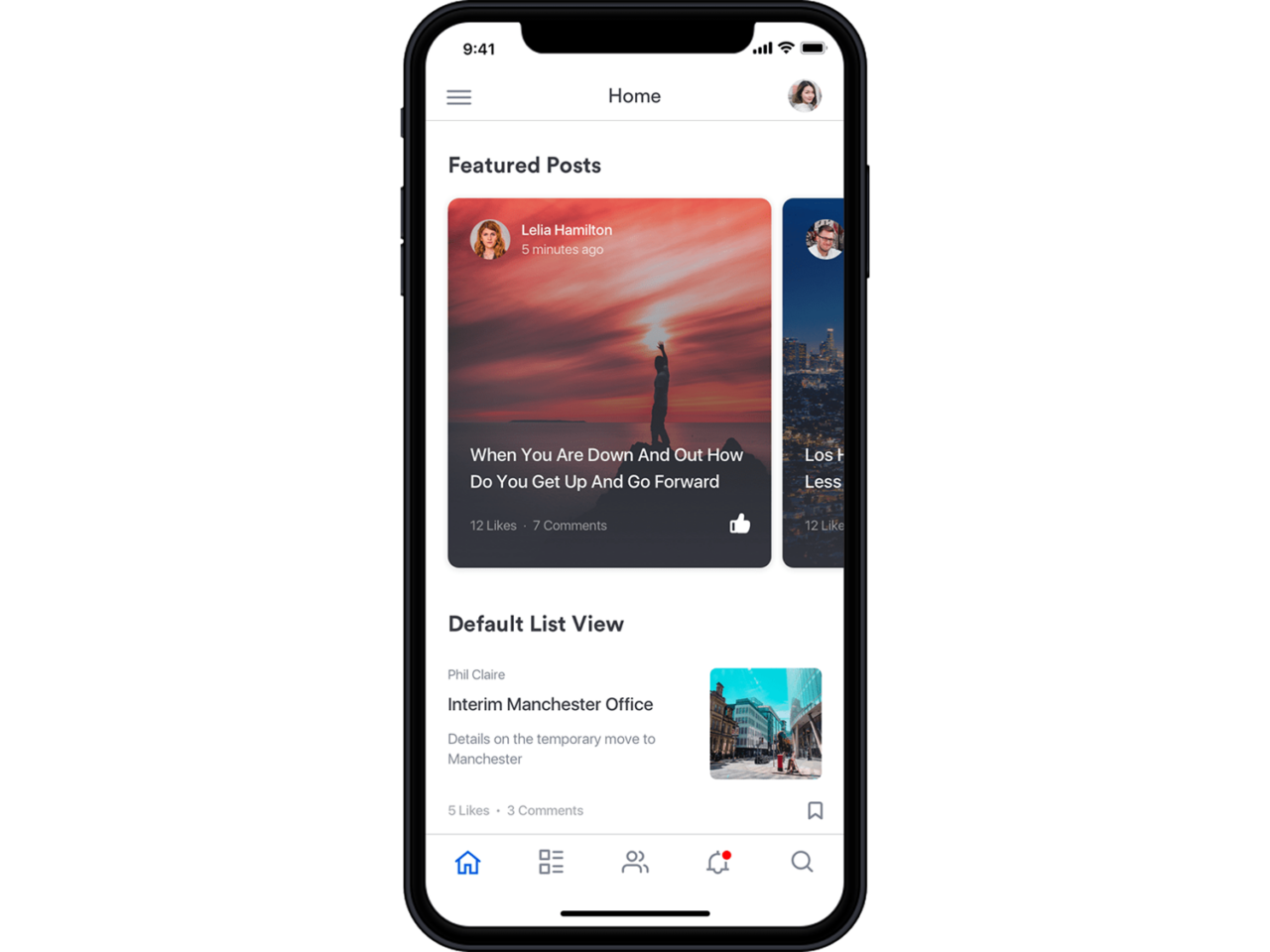How to communicate good news to employees

Internal communicators, HR professionals, and senior management dedicate time to planning the delivery of bad news. Celebrating positive and good news can be a prime driver of engagement and company culture, however, so it’s essential to mix in some wins along the way. The balance is tough but this article has thoughts on how to create a comms strategy filled with positivity.
Handled badly, a negative announcement can trigger a troubling ripple effect within a business. Bad news can impact morale, lower productivity, and lead to a surge in employee turnover. Worse still, if disgruntled staff make their feelings public, you may have a full-scale PR nightmare that can cause long-term damage to your brand and reputation.
14 steps to great internal comms!
By contrast, delivering positive news internally is easy, isn’t it?
Not always. While delivering good news is generally easier for communicators and more engaging for internal audiences, there is a danger that too much focus on happiness leads to toxic positivity and a denial of difficult realities. If you always broadcast new triumphs and don’t mention the job cuts that happened last month, employees lose trust.
So, how should you communicate good news to employees in a more balanced way?
Ask the question, is it good news?
Are you sure what you have to communicate will universally (or even predominantly) be interpreted as good news?
Before taking to the wires, evaluate the impact of this news on the wider business. Perhaps the C-Suite wants to communicate the acquisition of a competitor. Senior management believes it signals a lucrative return for the company and wants to spread the word. For employees on the frontline or in offices, however, could this news threaten existing jobs or cause anxiety for particular departments?
Even scenarios that appear at first glance to be positive on all sides have the potential to cause some trepidation. Let’s say the company has landed a prestigious new customer, which promises to generate extra revenue for the business.
It may be amazing for the CFO and any shareholders, but the possible impact on workloads may have your customer service team running for the hills. Perhaps this new client will require a lot of additional international travel or will take away resources from existing projects. Be sensitive to the fact that people will interpret and respond to news in different ways, and the impact won’t be the same for everyone.
Have a campaign plan (if it’s relevant)
It won’t always be required if the news is quick and simple, but if the positive announcement is a particularly long or recurring one, it’s worth creating a high-level internal communications plan to increase your chance of employee engagement.
A successful plan considers the 5 major elements of any communication:
- Who needs to know this news and who is involved in creating and delivering it?
- What is the key information that needs to be communicated?
- Why is this information relevant, important, or worthy of attention?
- When should the news be made public to employees?
- How are you going to distribute the news?
Let’s consider each of those points.
14 steps to great internal comms!
Who: Line up the right people
One of the core responsibilities of any internal communicator operating in the digital age is to filter, target, and personalize communication.
Employees are continually exposed to digital noise within their roles and their personal lives. As a result, a lot of all-company communications that seem irrelevant or not tailored to their specific interests will be deleted without acknowledgment.
Take the time to break down your employee base and identify:
- Who needs to know – those the news directly impacts or who have personal involvement or connection to the news
- Who should know – for example, members of management or those with the responsibility of answering questions
- Who would like to know – those who have an interest in the news or topic
It may be appropriate to push the news to the groups identified in these audience segments but to just make it publicly accessible for those outside of these groups. This could be as simple as the difference between sending a comprehensive email about the news (push) vs. creating a new page with all the details and surfacing it on your intranet homepage via a content widget that shows recent news (pull).

Ensure the news comes from the right person. If this is a positive announcement that will be important or relevant across the business, line up a member of senior management to give the announcement gravitas and value.
If the news needs tailoring to individual departments, consider an information cascade using manager communications and dedicated talking points.
When thinking about who will create the messages also, consider whether it requires the input of specialist designers or people who know how to cut together an engagement-grabbing Tiktok or reel-style video. If specialist knowledge is required to deliver news about legal changes, cybersecurity, or some other information-heavy specialism, work with subject-matter experts to simplify the message for a broad audience.
What and Why: Determine the message and the ‘WIIFM?’ factor
What do different groups of employees need to know about this news?
With some kinds of internal communication, succinct is best—although providing more comprehensive information and FAQs makes sense on intranet pages too.
Attention spans may be short and workloads may be heavy, so overloading people with reams of information in a plain-text email may end up undermining the good news by adding to everyone’s to-do lists. If the main points of the message aren’t easily simplified, add a call-to-action (in the form of a link, button, or QR code, for example), so that people can go from the email, Teams message, or Digital Signage screen to a fuller explanation on your intranet platform.
After all, the intranet is there to serve as a hub for knowledge and information; use it to its fullest purpose by keeping all materials there in a centralized and easily updated way.
Pick out the main points from the information you have. Then, consider the “what’s in it for me?” factor. The most effective messages don’t just explain why it’s good news for the sender, or even for the company as a whole, they offer insight into why this development will have a positive impact on everyone reading or watching it.
In a family situation, we might think of this difference as:
- Great news, we’re moving house so that I can be closer to work and have a shorter commute! (speaker-focused)
- Great news, we’re moving house so we can spend more time together as a family! (organization-focused)
- Great news, we’re moving house so my work commute will be cheaper and we’ll be able to go on vacation! (audience-focused)
How will the update impact different employee groups? Why is this a positive announcement for them? What do they get out of it? By putting yourself in the shoes of employees and tailoring the message to their perspectives, you’ll capture their attention.
The two words ‘information’ and ‘communication’ are often used interchangeably, but they signify quite different things. Information is giving out; communication is getting through.
Sydney J. Harris
Finally, when crafting your message, consider the language you use. Words are a powerful tool to generate engagement and can be emotive and influential. If writing the news, capture the main point in a headline and develop the main points in the body of the content. Use inclusive language (“we”, “us”, “our”) and positive emotive terms where possible.
Consider the difference:

If particular individuals, departments, or external partners played a role in bringing this positive news about, acknowledge their contributions, name them, and give recognition. This not only makes the news relatable and personal but avoids the danger of putting anyone’s nose out of joint and turning that positive announcement into a source of disgruntlement.

A company-wide blog that @mentions individuals or teams boosts awareness and engagement.
When: Choose a good time for good news
Timing is everything, so we’re told. This is especially true for internal communications.
There are a few considerations when marking out the right time to deliver good news to employees. First, consider any other announcements or events occurring within your business that could impact how the news is received. Announcing that you’ve had your most profitable year ever shortly after a round of layoffs is unlikely to be received well.
More importantly, sharing good news is also an opportunity to engage employees, build morale, and enhance your internal brand. If you do it at a time when everyone’s focus is elsewhere – on a push to achieve quarterly targets, for example – the news may be pushed to the bottom of the priority list. A natural instinct with positive news is to share it as soon as possible, but it may prove more effective to delay slightly if you’re vying for attention.
It’s also important to consider places or teams operating in different time zones. Staggering publication according to the specific geography of the audience is more likely to be well-received and increases the likelihood of engagement.
14 steps to great internal comms!
Where: Select your good news communication channels
How you choose to distribute your message will be determined by many of the previous points, including who needs to receive the news, who is delivering it, when you’ll be making the announcement, and why it’s important.
Our guide to change communications outlines an Interact survey where customers voted on a preferred method of communication for business change. One Communications Manager observed:
We always face the same challenge; you simply can’t please everyone. If you choose a town hall, people may feel overwhelmed by the event. If you choose line manager cascades, the message may get diluted and the rumor mill will start. If you choose an intranet post, people may feel this is impersonal and cold. So the answer is, you need a tailored combination of communication methods in order to try and best meet the emotional and information needs of your audience.
Map out your available channels and identify the people who use them. Which are most effective in the workplace for internal communication ? Consider the needs of remote workers or staff on the road who may not be able to access an on-site message or attend a town hall announcement. If your company has an intranet app, making sure content is easily accessible there helps to flag the news to a greater audience.

Mobile intranet content is a powerful way to ensure key information, news, and updates are seen by employees, regardless of location.
In terms of re-using and recycling content for greater reach, it may be appropriate to reproduce the central message in different formats. The original post may be a blog on your intranet software, for example, but this could later be shortened as part of an employee email newsletter. One of the senior leadership team could record some video highlights to be shown on digital signage with a QR code for more information.
This also addresses one of the greatest challenges facing internal communicators: how to deliver the sentiment of a message using mediums that remove non-verbal cues, such as tone of voice, gestures, or facial expressions.

Finally, consider using enterprise social networking tools where possible.
With positive news, you can spread your message further and faster by giving people the opportunity to like, comment, share, and @mention (tagging) other people or teams.
However you chose to communicate your company’s good news, we hope it’s a pleasant and engaging experience.

